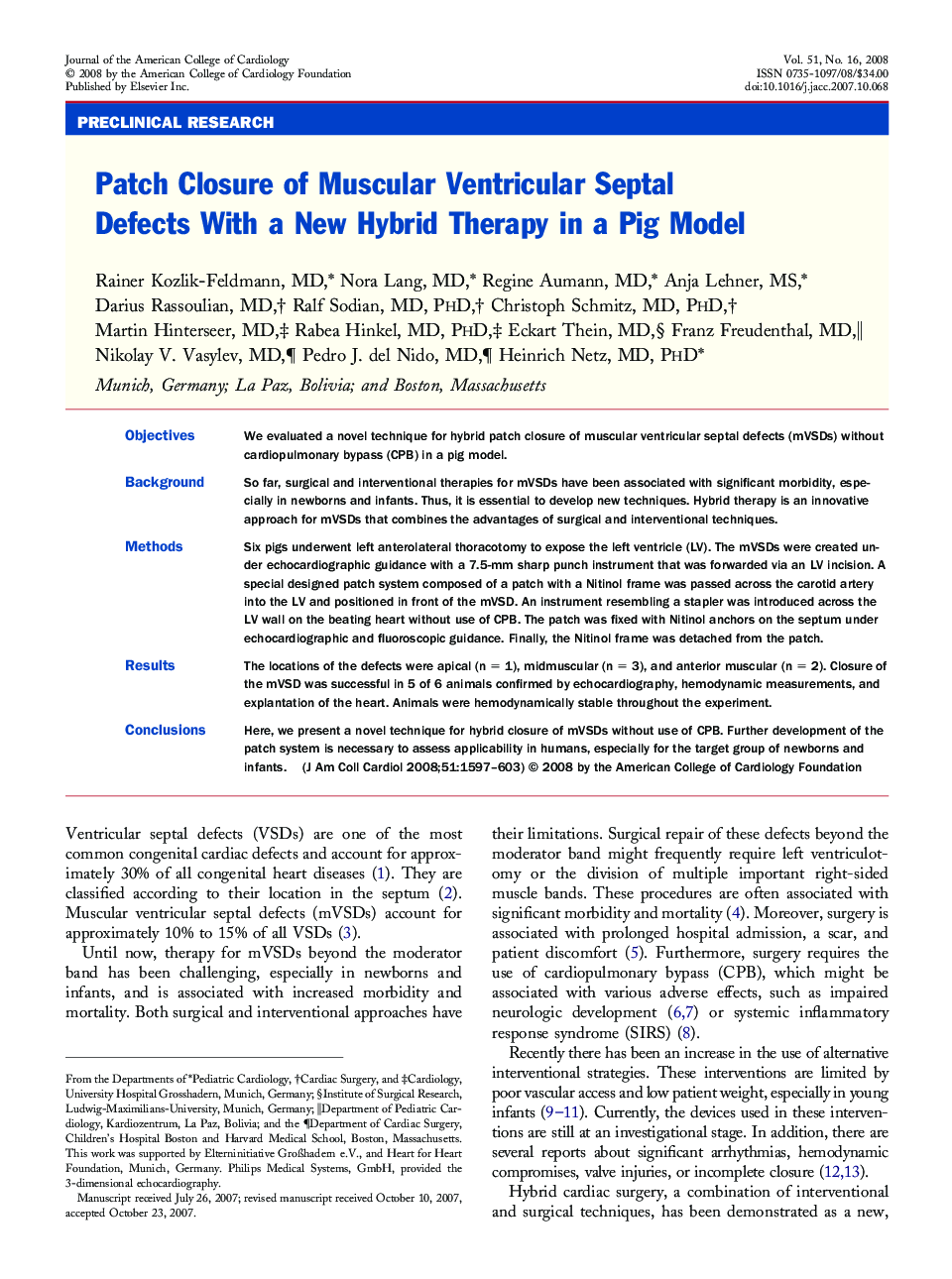| Article ID | Journal | Published Year | Pages | File Type |
|---|---|---|---|---|
| 2952385 | Journal of the American College of Cardiology | 2008 | 7 Pages |
ObjectivesWe evaluated a novel technique for hybrid patch closure of muscular ventricular septal defects (mVSDs) without cardiopulmonary bypass (CPB) in a pig model.BackgroundSo far, surgical and interventional therapies for mVSDs have been associated with significant morbidity, especially in newborns and infants. Thus, it is essential to develop new techniques. Hybrid therapy is an innovative approach for mVSDs that combines the advantages of surgical and interventional techniques.MethodsSix pigs underwent left anterolateral thoracotomy to expose the left ventricle (LV). The mVSDs were created under echocardiographic guidance with a 7.5-mm sharp punch instrument that was forwarded via an LV incision. A special designed patch system composed of a patch with a Nitinol frame was passed across the carotid artery into the LV and positioned in front of the mVSD. An instrument resembling a stapler was introduced across the LV wall on the beating heart without use of CPB. The patch was fixed with Nitinol anchors on the septum under echocardiographic and fluoroscopic guidance. Finally, the Nitinol frame was detached from the patch.ResultsThe locations of the defects were apical (n = 1), midmuscular (n = 3), and anterior muscular (n = 2). Closure of the mVSD was successful in 5 of 6 animals confirmed by echocardiography, hemodynamic measurements, and explantation of the heart. Animals were hemodynamically stable throughout the experiment.ConclusionsHere, we present a novel technique for hybrid closure of mVSDs without use of CPB. Further development of the patch system is necessary to assess applicability in humans, especially for the target group of newborns and infants.
